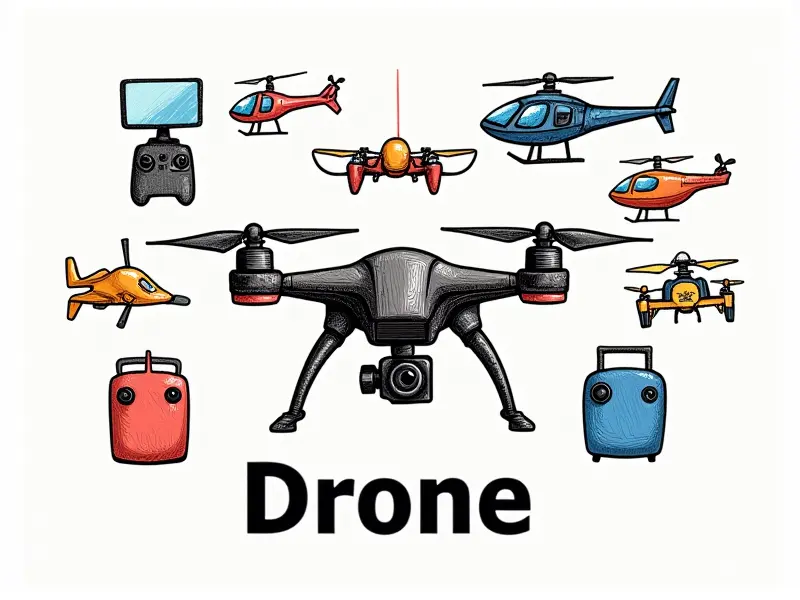Can RC quad fly in rain?

Can RC Drones Handle Light Rainfall?
Flying an RC quadcopter in light rainfall is a common concern among hobbyists and enthusiasts. While it might seem like a daunting task, many modern RC drones are designed with some level of weather resistance to handle minor wet conditions. However, the extent to which these devices can operate effectively varies widely.
Risks of Flying RC Quads in Wet Conditions
Flying an RC quadcopter in wet conditions poses several risks that could compromise both the drone and its operator's safety:
- Electrical Malfunctions: Water can cause short circuits, leading to erratic behavior or complete failure of electronic components.
- Reduced Flight Stability: Moisture on propellers and motors can affect the aerodynamics, causing instability during flight.
- Damage to Components: Prolonged exposure to water can corrode metal parts and degrade plastic components over time.
How Rain Affects RC Quad Performance
Rain impacts the performance of an RC quadcopter in several ways:
- Propeller Efficiency: Water droplets on propellers can decrease lift and thrust, making it harder for the drone to maintain altitude.
- Battery Drain: Wet conditions often lead to increased power consumption due to higher resistance in electrical circuits.
- Camera Distortion: Water droplets on camera lenses can distort images and reduce visibility, affecting video quality.
Tips for Flying RC Quads in Light Rain
If you decide to fly your RC quadcopter during light rain, here are some tips to help mitigate risks:
- Use a Weather-Resistant Drone: Opt for models designed with water-resistant features such as sealed motors and propellers.
- Cover Critical Components: Use waterproof covers or wraps to protect sensitive electronic parts from moisture.
- Battery Management: Ensure your batteries are fully charged before flying, and monitor them closely during flight.
Is It Safe to Fly RC Quads During Drizzle?
Flying an RC quadcopter in drizzle is generally less risky than heavy rain but still carries some risks. The light moisture can affect the drone's aerodynamics, and prolonged exposure could lead to water damage. Always assess the weather conditions before flying.
Should You Fly Your RC Quad in the Rain?
The decision to fly an RC quadcopter in the rain depends on several factors:
- Type of Drone: Some drones are more resistant to water than others. Check your drone's specifications.
- Purpose of Flight: Consider whether the benefits outweigh the risks, especially if you're flying for recreational purposes.
- Weather Conditions: Light drizzle is less risky compared to heavy rain or thunderstorms.
Can Waterproof RC Quads Handle Heavy Rain?
Waterproof RC quads are specifically designed to handle heavier rainfall, but even these models have limitations. They typically feature sealed electronics and water-resistant materials, but prolonged exposure can still cause damage over time.
Best Practices for RC Quadcopter Rain Exposure
To minimize risks when flying in wet conditions:
- Dry Off Before Storage: After flight, dry off the drone and its components thoroughly to prevent corrosion.
- Regular Maintenance: Inspect your drone regularly for signs of water damage or wear.
- Follow Manufacturer Guidelines: Adhere to the manufacturer's recommendations on weather resistance and maintenance.
How Rain Affects RC Quad Flight Stability
Rain can significantly affect flight stability by altering aerodynamics. Moisture on propellers reduces lift efficiency, making it harder for the drone to maintain steady flight paths. Additionally, water droplets can accumulate on sensors and cameras, affecting their accuracy.
Effects of Rain on RC Quad Performance
The performance degradation caused by rain includes:
- Decreased Lift: Water droplets reduce the efficiency of propellers, leading to decreased lift.
- Battery Drain: Higher resistance in wet circuits can cause faster battery depletion.
- Camera Distortion: Moisture on lenses distorts images and reduces visibility.
Is It Safe to Fly RC Drones in Drizzle?
Flying an RC drone during drizzle is relatively safe if you take necessary precautions. Light moisture poses fewer risks compared to heavy rain, but it's essential to monitor weather conditions closely and be prepared for sudden changes.
Conclusion
Flying an RC quadcopter in the rain requires careful consideration of your drone’s capabilities and environmental factors. While some models are designed with water-resistant features, flying in wet conditions still carries risks that can compromise both safety and performance. Always prioritize caution and follow best practices to ensure a safe and enjoyable experience.

